| BustedGear.com |
| Shop | Repairs | Manufacturers | Resources | iFAQs | About |
|
|
|||
| VOX Continental | Keyswitch Cleaning | ||
|---|---|---|---|
|
Last Page < |
Page Bottom ∨ |
Next Page > |
|
|
|
|||
|
Lift the Continental's keybed and set it on its back. Before working on it, support it from behind (see photo below).
|
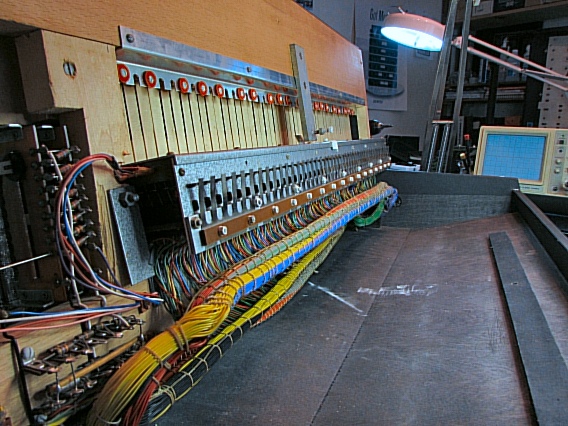
|
|---|---|
|
Several of the keys on this Vox Continental made onset noise or sputter, a sign of dirty key contacts. To access the contacts, you must separate the keyswitch assembly from the keybed. Start by removing a hex nut from each end of the assembly. In this photo, an arrow points to the nut at the low end of the assembly. |
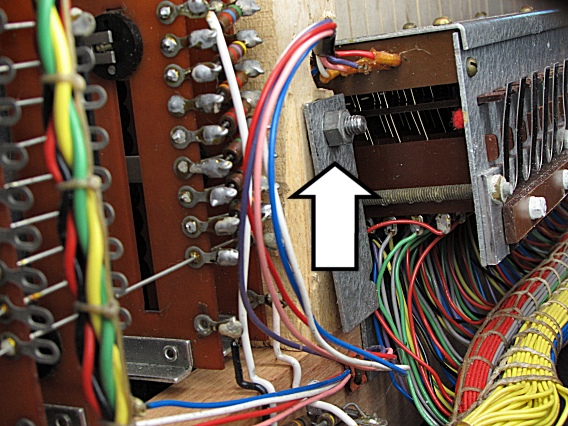
|
|
In this photo, an arrow points to the nut at the high end of the assembly. Take note of the key contacts for the topmost key. Each key has four contact wires. When you play a key, each wire gets pushed against one of four metal bus bars that run under all the keys. Sawtooth tones pass from the contact wires to the four buses (16', 8', 4', and IV), carrying them to their drawbars. The IV bus gets a mixture of four ranks: 2-2/3', 2', 1-3/5', and 1'. In other words, two upper octaves, a third, and a fifth. |
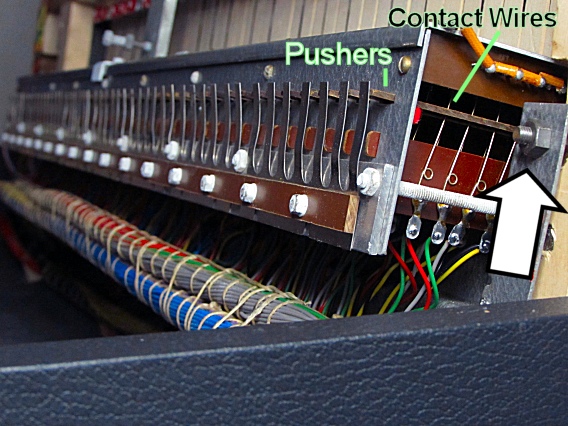
|
|
After removing the two mounting nuts, remove a handful of mounting screws from the lower flange of the keyswitch assembly. Here, arrows point out two of the screws. |
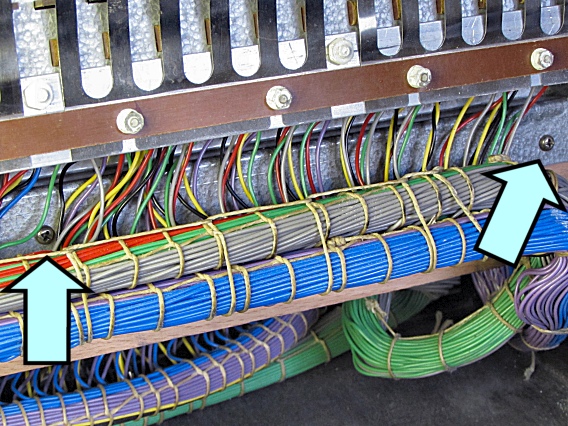
|
|
Finally, back out the adjustment screw circled here. In the photo, it's already backed out of the vertical strut. Normally, the tip of the screw touches the angle bracket, and the locking nut touches the strut. Leave the locking nut where it is so you know how far to advance the screw when you reinstall the assembly. |
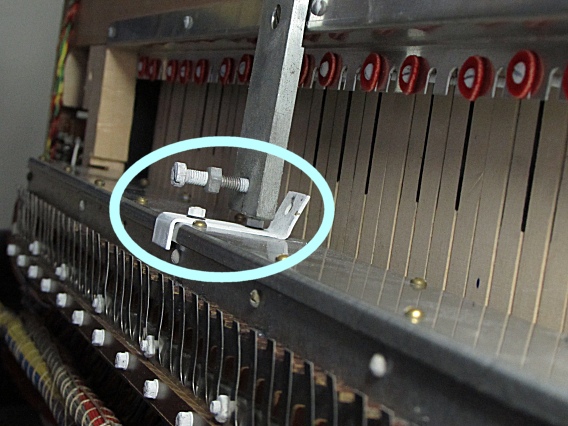
|
|
At this point, you can carefully separate the keyswitch assembly from the keybed. |
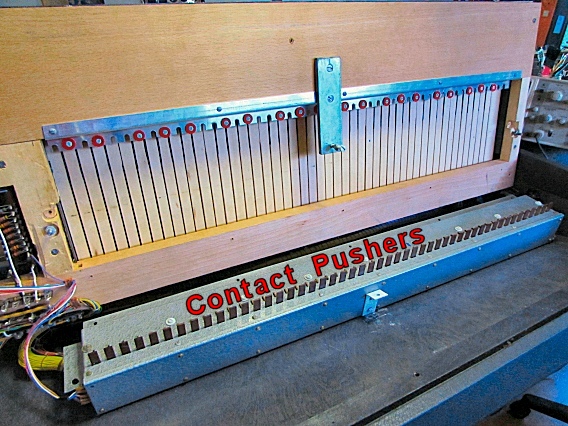
|
|
Rotate the assembly to expose the keyswitch wiring. The wire looms have enough slack for this maneuver. |
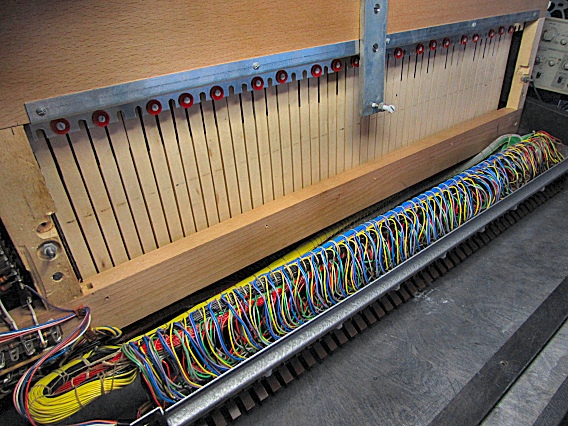
|
|
Spread the wire leads to access the contacts for any particular key. Notice that 4 leads (1 yellow, 1 black, 1 blue and 1 violet) connect to one of the contact wires (for the IV bus), whereas just 1 lead connects to each of the other contact wires. To clean contacts, use a non-lubricated contact cleaner or a high percentage (>90%) isopropyl (rubbing) alcohol. Contact cleaners with lubricants don't evaporate and tend to capture dirt. Pipe cleaners are ideal for reaching into the tight spaces. Bend the pipe cleaner to reach and wipe dirty contact wires and buses. |
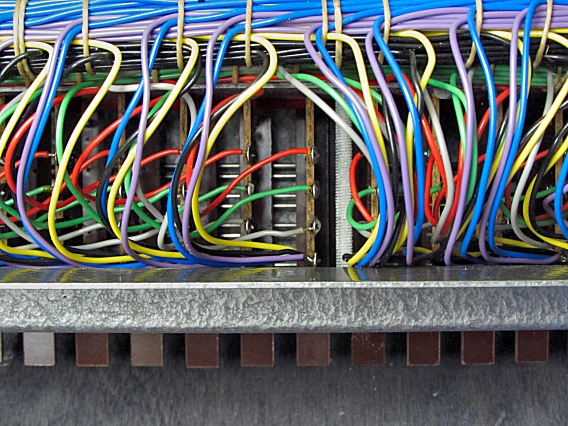
|
| VOX Continental | ||
|---|---|---|
|
Last Page < |
Page Top ∧ |
Next Page > |
|
|
|
|
|
Page design and content Copyright © Richard Diemer - All rights reserved |
